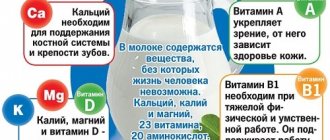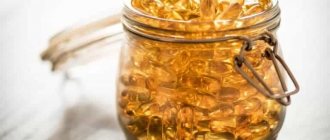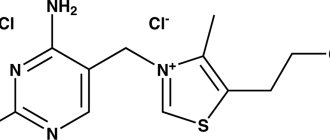There are 10 signs described in the literature and iron deficiency symptoms. Iron deficiency occurs when there is a deficiency of this mineral in the human body. In this article, you will learn about the signs of iron deficiency in the body and why it is bad for people with hypothyroidism.
You, of course, know that iron is required for the synthesis of hemoglobin, which is responsible for the transport of oxygen to all organs and tissues of the body.
If there is a deficiency of hemoglobin in the human body, then all organs and tissues will not be provided with an adequate amount of oxygen and will not be able to work effectively.
This leads to anemia.
Common causes of iron deficiency include:
- insufficient intake of iron into the body due to poor diet or restrictive diets,
- inflammatory bowel disease,
- increased needs during pregnancy,
- blood loss during difficult periods,
- internal bleeding.
Signs and symptoms of iron deficiency vary depending on the severity of the anemia, how quickly it progresses, age, and current health.
In some cases, people have no symptoms.
Causes of iron deficiency
Iron deficiency in the body can be caused by the following reasons:
blood loss:
- obvious blood loss caused by surgical interventions, injuries;
- heavy menstrual bleeding;
- blood loss caused by various diseases (hemorrhoidal bleeding, peptic ulcer);
- donation;
insufficient absorption of iron in the digestive tract:
- celiac disease;
- Helicobacter infection;
- atrophic gastritis;
- dysbacteriosis;
- enteritis;
insufficient iron intake:
- malnutrition;
- unbalanced diets, including vegetarianism;
other:
- nocturnal paroxysmal hemoglobinuria;
- intravascular hemolysis accompanied by loss of iron through the urinary tract;
- hemolysis caused by implantation of artificial heart valves;
- obesity surgery;
- increased growth of the body (in children under three years of age);
- pregnancy and breastfeeding;
- chronic renal failure;
- acute infectious diseases;
- blood diseases (leukemia, myeloma);
- vitamin B12 deficiency;
- hypothyroidism;
- liver cirrhosis or chronic hepatitis.
Treatment
Iron deficiency is most often associated with some form of anemia. There are 4 degrees of anemia, depending on severity:
- Lightweight;
- Moderate;
- Expressed;
- Heavy
The third and fourth from the list must be treated in a hospital setting, since it is simply impossible to do this at home and on your own. As for the first two degrees, it is very important to definitely determine the causes of this phenomenon, and if it turns out to be incorrect and inadequate nutrition, you should compensate for the iron deficiency with special medicinal supplements and henceforth change your diet.
Any iron deficiency, including hidden iron deficiency, cannot be compensated for by diet alone. The element supplied with food is spent on current needs, and in order to replenish reserves, one should resort to active supplements in the form of medications.
Symptoms of iron deficiency
There are latent iron deficiency and clinically expressed ones.
Latent iron deficiency is determined only at the biochemical level. Compensation for iron deficiency occurs due to the tension of enzyme systems and the removal of iron from the body's reserves. A decrease in the number of red blood cells and hemoglobin level may not occur, but the iron-binding and general capacity of the serum changes, and the level of some enzymes decreases.
Severe iron deficiency in the body develops when all reserve reserves of the body have already been exhausted and the incoming iron becomes insufficient to compensate for its losses.
Symptoms of obvious iron deficiency include: rapid fatigue, darkening of the eyes, weakness, attacks of palpitations and shortness of breath during normal exercise, dizziness, pale skin, and headaches.
Symptoms of tissue trophic disorders also occur:
- peeling of the skin;
- delamination, transverse waviness, brittleness of nails;
- increased hair loss process;
- change in taste (the desire to eat dough, raw meat, ashes, toothpaste, chalk);
- development of certain olfactory whims (addiction to the smells of kerosene, gasoline, acetone);
- development of mucosal atrophy (tooth decay, dry mouth, glossitis, angular stomatitis).
Symptoms of iron deficiency in the body also include various dysfunctions:
- gastrointestinal tract (colitis, atrophic and subatrophic gastritis, bloating, lack of appetite, constipation, diarrhea);
- hepatobiliary system (biliary dyskinesia, development of fatty hepatosis);
- cardiovascular system (neurocirculatory dystonia, anemic myocardial dystrophy, which manifests itself as cardialgia, heart rhythm disturbances);
- central nervous system (decreased concentration, memory impairment).
Also, iron deficiency can be manifested by frequent infectious and inflammatory diseases.
Iron deficiency is especially dangerous in pregnant and breastfeeding women, people engaged in hard work, and young children. Manifestations of this condition develop especially quickly and pronouncedly.
Value and rate of consumption
Iron is one of the most important microelements for health. With its participation, many processes occur in the body.
Hormone synthesis. Ferum is an essential component for the production of thyroid hormones. With their help and with the participation of the immune and nervous systems, the functioning of the brain, kidneys, heart and other organs is regulated.
Synthesis of enzymes and proteins. These substances are necessary for the creation of DNA, the destruction of toxins in the liver, and the synthesis of blood cells. The level of leukocytes that protect the body from infection depends on the iron content.
Transport of oxygen. The trace element is part of the blood protein (hemoglobin), from which red blood cells are built. Hemoglobin reacts with oxygen, delivering it from the lungs to the tissues of the body. Important biochemical processes occur with the participation of oxygen. Hemoglobin removes the released carbon dioxide through the lungs.
The iron requirement for men is 10 mcg per day. For women – 18 mcg. During pregnancy, rates double. The reason for this is the restructuring of hormonal levels. This leads to fluid retention and a decrease in hemoglobin levels. The body consumes the microelement from reserves contained in the liver, bone marrow, and muscle tissue.
Treatment of iron deficiency
Treatment of iron deficiency should begin with eliminating the causes that cause it.
If iron deficiency is caused by blood loss, then the cause of the bleeding should be treated.
If the cause of iron deficiency is insufficient dietary intake of iron, the patient will be advised to change the diet or use iron supplements.
If iron deficiency is caused by insufficient absorption of this microelement in the digestive tract, then attention should be paid to the treatment of diseases of the digestive system.
The next stage in the treatment of iron deficiency is the use of iron supplements in the form of tablets, drops, syrups, injections (in especially severe cases). In the treatment of iron deficiency, drugs such as Tardiferon, Ferrum Lek, Fenyuls, Hemofer, Totema and others are used.
The duration of therapy plays an important role in the treatment of iron deficiency - it should last at least several months. If iron deficiency is pronounced, then the process of replenishing the iron deficiency can take six months.
For 1-3 months, iron supplements are taken in a therapeutic dosage until normal blood counts are achieved, the remaining 3-6 months require therapy to restore iron reserves in the depot organs. In this case, taking medications should be accompanied by adequate nutrition.
To improve the absorption and transformation of iron, ascorbic acid and B vitamins are also prescribed.
A month after the start of therapy, the patient is recommended to undergo another examination to ensure the effectiveness of the prescribed treatment.
If the results of a follow-up study indicate that iron levels have not increased, the patient may be advised to undergo an iron absorption test, in which iron levels are determined one hour after taking the drug. If the concentration of iron increases by at least 3 times, then this indicates adequate absorption of the microelement, and the doctor will simply adjust the dosage of the medicine. Otherwise, change the method of introducing iron.
How to increase iron in the blood?
You can increase the level of iron in the blood through a balanced diet and medications. The patient should include foods that contain sufficient amounts of iron in their diet. Among the “record-breaking” products are red varieties of lean meat, liver and poultry. The trace element is also found in plant foods - buckwheat, apples and pomegranates.
Often, a diet rich in iron is not enough to replenish it in the body. If necessary, the doctor will select medications, determine their dosage and duration of use. You should not decide this issue on your own, since the wrong dosage can lead to an excess of iron. It is also harmful to the human body, as is its deficiency. Let's take a closer look at the options for drug therapy.
Medicines to restore iron levels
In a situation where a patient has a critically low level of iron in the blood, he requires immediate restoration of hemoglobin. For these purposes, drugs are used in the form of injections. They are also prescribed for the treatment of chronic iron deficiency anemia. Examples of drugs:
- iron hydroxide sucrose complex;
- iron sorbitol complex with citrate in dextrin solution, containing 100 mg of iron;
- iron hydroxide dextran.
If iron deficiency is not critical, then the doctor selects drugs with a prolonged action. These include: ferric chloride, ferrous fumarate or sulfate, as well as its hydroxide polymaltosate. It is acceptable to prescribe vitamin complexes containing the necessary macro- and microelements in their composition. So, in combination with the microelement in question, the patient can take manganese and copper gluconate, ascorbic acid or vitamins B 9 and 12.
Separately, biological food additives should be highlighted. Patients are often interested in the question: does hematogen help maintain normal iron levels? Yes, this healthy product can have a beneficial effect on iron levels in the body. However, its isolated use cannot lead to an increase in the level of the substance. The product cannot be used as an alternative to meat products or medicines. It should be considered a preventive measure, but not a treatment measure.
You should not start using it yourself without your doctor’s permission. Since hematogen contains sugar, which may be a contraindication or limitation for people with diabetes.
Preventing iron deficiency
To prevent iron deficiency in the body, you need to eat right, eating enough foods rich in iron (cocoa, seafood, nuts, dried fruits, liver, broccoli, buckwheat).
Iron deficiency in the body is a condition associated with an imbalance between the intake of iron and its losses in the direction of predominance of losses. Iron deficiency has a favorable prognosis for the patient, since with timely correction it can be completely eliminated.
Pale skin
Hemoglobin in red blood cells gives the skin a pink tint. With iron deficiency, unhealthy pallor of the skin is observed. Carefully examine the following areas of the body:
- inner surface of lips
- gum,
- nails,
- the inside of the eyelids.
If their shade has changed towards pallor compared to the previous state, it is probably due to a lack of iron.
In some cases, the deficiency can be corrected by eating foods rich in iron.
Diagnostic features
If symptoms indicating the development of iron deficiency are detected, it is suggested to take a blood test, which examines:
- Size and color of red blood cells. With anemia associated with iron deficiency, the red blood cells are smaller than usual and their color is paler.
- Hematocrit The percentage of red blood cells in relation to the blood level. The normal level is between 34.9 and 44.5% for middle-aged women.
- Hemoglobin. A reduced level indicates developing anemia. The normal range for adult women is 13.0-15 g per deciliter.
- Ferritin. Normal protein levels help maintain iron in the body. A reduced amount indicates its low level.
If signs of iron deficiency anemia are detected, the doctor may prescribe additional tests:
- Colonoscopy. To exclude internal bleeding in the lower intestines.
- Endoscopy. The examination checks for bleeding from esophageal hernia, stomach, and ulcers.
- Ultrasound. This method determines the cause of excess menstrual bleeding.
After passing the tests, treatment with drugs with iron supplements is prescribed. When making a diagnosis, one must distinguish between anemia that is caused by internal diseases and anemia caused by iron deficiency.
In some bacterial infections and inflammatory diseases, anemia develops as a secondary cause, so taking glandular supplements is not suitable for a person with anemia caused by a chronic disease. Symptoms of iron deficiency include shortness of breath on exertion, fatigue, restless leg syndrome, and poor coordination.
Causes of iron deficiency in women
Iron is important for the proper functioning of all cells in the body.
About 70% of it is found in blood cells, red blood cells containing hemoglobin, and in muscle cells - myoglobin. Part of the mineral, no more than 6%, is found in proteins necessary for respiration and energy production, and part is in enzymes involved in collagen synthesis. Main functions of iron:
- Forms hemoglobin. When interacting with proteins, it creates hemoglobin in the blood, the main function of which is to transport oxygen from the lungs to the tissues.
- Increases energy through the production of myoglobin. This hemoprotein, found in muscle fibers, receives oxygen from hemoglobin and distributes it throughout the muscle cells. A decrease in myoglobin leads to fatigue and weakening of the body.
- Supports brain functions. The brain uses 20% of the oxygen contained in the blood. Since iron is responsible for creating proteins that transport oxygen, brain function depends on iron stores.
- Supports metabolism. Metabolism may slow down to adjust to low oxygen levels, leading to fatigue and weakness, two signs of iron deficiency. But when a sufficient amount of iron is supplied, metabolism functions normally.
- Supports immunity. The human body requires iron for the proliferation of T cells, which drive immune system responses against cancer cells. Its lack makes a person susceptible to infections.
- Supports the endocrine system. Iron is an important component of many enzymes. These are complex proteins that serve as catalysts in chemical reactions. A body deprived of iron will suffer from endocrine disruption, including high cholesterol and thyroid dysfunction.
https://www.youtube.com/watch?v=subscribe_widget
A few facts about iron and its role:
- The female body has 4.7 million red blood cells per 1 cubic meter. ml of blood. Their production occurs in the bone marrow.
- Each red blood cell contains 280 million hemoglobin molecules.
- The lifespan of an erythrocyte is from 90 to 120 days. When old cells are destroyed and removed by the liver and spleen, iron is returned to the bone marrow to form new cells.
- Additionally, iron accumulates in the liver and bone marrow for the synthesis of hemoglobin.
Lack of iron in the body (symptoms in women are expressed primarily in iron deficiency anemia and frequent infectious diseases) causes a number of other problems. General fatigue, lethargy, shortness of breath, rapid heartbeat, and dizziness appear. Blood loss leads to severe iron deficiency.
Heavy periods
During heavy and long menstrual periods, iron consumption increases. At the same time, the number of building blocks - red blood cells, which the body cannot replace with anything, decreases. Severe blood loss during menstruation, menorrhagia, is abnormal uterine bleeding.
This is one of the reasons why women often turn to doctors. Prolonged heavy bleeding, hypermenorrhea, in which the menstrual cycle lasts up to 2 weeks, leads to anemia if the losses are not compensated by increased doses of iron.
Anemia can be caused by fibroids, benign growths that form in the muscle tissue of the uterus. Fibroids often bleed, which leads to frequent and heavy menstrual cycles and blood loss. Iron deficiency may be a sign of uterine cancer in older women who experience uterine bleeding. But the main cause of anemia in postmenopausal women is gastrointestinal blood loss.
Slow chronic blood loss causes iron deficiency anemia. It occurs from peptic ulcers, colon polyps, colorectal cancer or hiatal hernia. Stomach bleeding occurs as a result of frequent use of painkillers, especially aspirin.
People on a meat-free diet, vegetarians, are especially susceptible to anemia. Additionally, dietary supplements such as calcium taken with iron-rich foods interfere with the absorption of the mineral.
All iron is absorbed from food into the blood in the small intestine. People suffering from an intestinal disorder, celiac disease, cannot fully absorb the microelement. If part of the small intestine has been removed, the ability to absorb micronutrients and nutrients is also affected.
Normal functioning of stomach acid is also necessary. Chlorhydria is a disorder in which there is a lack of hydrochloric acid in the stomach. And when its environment is not acidic enough, then substances, including iron, cannot be absorbed. Problems with malabsorption occur as a result of taking medications such as antacids, acid blockers.
Women are at risk of getting excess iron when their periods suddenly stop. Amenorrhea can last 6 months or more. This is associated with menopause, hysterectomy, birth control pills.
Excess iron, increasing its level to toxic, affects the development of:
- premature heart attack;
- diabetes;
- liver diseases;
- osteoporosis;
- hormonal imbalance;
- loss of menstruation.
Lack of iron in the body (symptoms in women are expressed by a sharp decrease in hemoglobin) occurs in pregnant women and during breastfeeding. At this time, iron reserves are consumed not only by the woman’s body, but also serve as a source of hemoglobin for the growing child or fetus.
Women who suffer from anemia during pregnancy often give birth to children with severe anemia. The amount of blood lost during childbirth is about 500 cubic meters. cm. Thus, 200-250 mg of iron is lost. In addition, another 500-800 mg of the substance that was originally in the mother enters the blood and tissues of the newborn.
Lack of iron in the body (symptoms in women can be mild, moderate or severe) leads to decreased endurance and performance. Decreased red blood cell production reduces the body's ability to absorb oxygen. This leads to heart failure and arrhythmias in the long term.
Anemia has serious consequences for older women. It increases the risk of falls, reduces physical strength, and increases the severity of heart disease, which includes a decreased chance of surviving heart attacks. Even mild anemia at this age gives impetus to the development of dementia and cognitive impairment.
Treatment of mild and moderate iron deficiency is carried out in a clinic or day hospital. Severe cases of anemia are treated in a hospital setting. Initial therapy is carried out with ionic salt preparations of divalent iron.
To do this, doses are calculated corresponding to the patient’s weight and the severity of the disease:
- Iron tablets are taken on an empty stomach. If you have an upset stomach, they can be taken with meals.
- Iron supplements should not be taken together with antacids. Medicines that reduce heartburn interfere with the absorption of the mineral. The difference between doses should be at least 4 hours.
- Iron is better absorbed together with vitamin C, so you can take the medications with orange juice.
- Iron supplements cause stool upset and change its color.
The effect of taking iron-containing medications appears after a week of treatment. If the use of drugs does not increase iron levels, then the cause of the anemia is caused by bleeding or an absorption problem, which must be treated.
Iron supplements
| Drug name | Operating principle |
| Sorbifer Durules | In 1 tab. Contains 100 mg of 2-valent iron and 60 mg of vitamin C. Take 1 tablet. 2 times a day. |
| Ferretab | The drug is in capsules containing 152 mg of iron and 540 mcg of folic acid. Prescribed 1 drop. Per day. |
| Totema | Available in liquid form. 1 ampoule contains 50 mg of iron, 700 mcg of copper, 1.3 mg of manganese. Before eating, the contents of the ampoule are dissolved in water. Daily dose – 2-4 ampoules. |
| Ferrum Lek | Chewable tablets containing 400 mg of iron. |
| Maltofer | It is used for prevention in a group of elderly women, pregnant women, and those on strict diets; it is used in the form of drops; 1 ml contains 176 mg of iron. Tablets taken after meals - 1 pc. 1 time per day. Pregnant women - 1 tablet. 2-3 times a day. |
| Fkrro-Foil | Contains ferrous sulfate and folic acid. In mild forms of anemia, take 1 capsule 3 times a day, the course of treatment is 4 weeks. In subsequent stages of anemia, the dose is increased. |
You can increase hemoglobin with vegetables. Beets contain a lot of iron, folic acid, fiber and potassium.
- Bake 2-3 washed tubers in the oven or place in the microwave for 10-20 minutes. at a power of 750-800 W. Before placing in the microwave, wrap the vegetables in a baking sleeve, making holes to allow steam to escape.
- After baking, cool and use as intended: adding to salads, or eating as an independent dish.
- You can use fresh beet juice by adding carrot or apple juice.
We suggest you familiarize yourself with single hyaline cylinders in urine.
Daily consumption of pomegranate or its juice is the best way to increase iron levels and strengthen the walls of blood vessels.
- Drinking the juice daily in the morning will increase your mineral levels.
- Dry the pomegranate seeds and grind them in a coffee grinder to a powder. Every morning drink a glass of milk with 2 tsp pre-soaked. dry powder.
Nettle is a good source of iron, vitamins B and C. It also stimulates hair growth, controls blood sugar levels, and removes water from the body.
- Add 2 tsp. dried leaves into a cup of hot water.
- Brew for 10 minutes.
- Strain and add a little honey if desired.
- Drink herbal tea 2 times a day.
Dates contain iron and vitamin C.
- Soak 5-6 dates in a cup of milk and leave overnight.
- In the morning, eat berries and drink milk on an empty stomach.
The role of iron in human life and the causes of its deficiency
Anemia is caused by low production of red blood cells and hemoglobin, so there is low oxygen levels in cells throughout the body. Anemia usually results in low energy levels, but can also affect many body functions. From poor brain function to low immunity or inability to fight disease.
... people have insufficient iron intake, absorption or transport problems. Physiological losses associated with chronological or reproductive age, or chronic blood loss secondary to disease. In adults, IDA can lead to a wide range of adverse outcomes, including decreased performance or exercise capacity. As well as thermoregulation disorders, immune dysfunction, gastrointestinal disorders and neurocognitive disorders.
Iron maintains constant energy by helping to deliver oxygen to the body's cells. Iron also helps in the metabolic enzyme processes performed by the body to digest proteins and absorb nutrients from food. This is why a lack of iron in the human body causes exhaustion, problems with activity and many other symptoms of sluggish health.
Lack of iron in the body usually manifests itself in symptoms such as low concentration, mood changes and problems with muscle coordination. Iron is essential for movement because it helps store oxygen in the muscles, which allows them to move and strengthens them.
We invite you to familiarize yourself with the State of Affect - what it is. Its types and harm
Iron is the main food for the brain as it is essential for maintaining brain function. Iron helps carry oxygen to brain cells. In fact, 20% of the oxygen entering the body is used by our brain. As a result, a lack of iron in the human body impairs memory or other psychological functions. Iron deficiency in infants and children can cause cognitive and psychomotor impairments, leading to learning difficulties.
Lack of iron in the human body can delay motor function. Connect your thoughts with movements and activities. And also processing the information received and learning new things.
Lack of iron in the body during pregnancy increases the risk of pre-term labor and very low birth weight babies. Premature babies have serious health problems in the first years of life. They also experience delays in growth and cognitive development.
Pregnant women need to eat more iron-containing foods and take supplements, the NIH warns.
Insufficient iron intake by pregnant women increases the risk of a woman developing iron deficiency anemia. Low consumption also increases the risk of low birth weight and premature birth. As well as low iron reserves and impaired behavioral and cognitive development in the child.
Iron is needed to properly digest and absorb other nutrients from food. And also because of its role in the processing of metabolic enzymes. Iron also helps deliver the required amount of oxygen to damaged areas of the body. These are damaged organs, tissues and cells that are susceptible to infection or disease development.
The neurotransmitter functions that support a positive mood are entirely dependent on the required level of iron in the blood. Our mood depends on the balance of hormones - dopamine, serotonin and other vital hormones. When oxygen levels are low, they cannot be synthesized properly in the brain.
This is one of the reasons why a lack of iron in the human body leads to poor sleep and mood. As well as a lack of motivation and low energy levels. In case of changes in mood and feelings of mild depression or anxiety, iron deficiency may be the cause.
Lack of iron in the human body is one of the causes of restless legs syndrome, leading to sleep disturbances. Iron promotes the delivery of oxygen in the required amount to the muscles, reducing muscle pain and spasms.
When there is an excess of iron in the blood, it is also a problem for the body. An overdose of iron into the body causes a disorder called hemochromatosis. This is unlikely to occur from eating foods containing large amounts of iron. Hemochromatosis usually occurs as a result of genetic causes or consumption of large amounts of iron-containing drugs.
Side effects may occur when taking high doses of iron supplements (45 mg/day or more). These include constipation, vomiting, cramps and nausea. However, taking small doses of iron does not cause adverse reactions and is well tolerated.
Know that iron can interact with other nutrients, including calcium. For best results, experts recommend taking calcium and iron supplements separately, spaced throughout the day.
Medicines for Parkinson's disease, cancer, or heart failure may not be absorbed well when taking iron supplements. Therefore, you should consult your doctor before taking iron supplements.
To increase your iron intake naturally, try adding foods high in iron to your diet. Here are some options:
- Make a beef and avocado burger or a veggie burger with homemade hummus
Reason 2.
May lead to symptoms that mimic hypothyroidism - depression, mild fatigue, weakness, faster heart rate, increased heart rate, loss of sex drive, hair loss and/or foggy thinking, etc.
At the same time, patients taking the drug of the dried thyroid gland begin to think,
- that they are on an insufficient dose of desiccated thyroid gland,
- or that a desiccated thyroid gland does not work.
Reason 3.
Patients taking desiccated thyroid preparation (or T3) cannot find an appropriate dose of the drug, since increasing its dose causes: - an increase in T3, - or an increase in rT3 levels (T3 reverse).
rT3 levels often increase when iron levels are low.
Reason 4.
It can reduce the activity of the deiodinase enzyme, that is, slow down the conversion of the T4 hormone to T3.
Reason 5.
May affect the first two of the three steps in thyroid hormone synthesis by decreasing the activity of the enzyme “thyroid peroxidase,” which is iron dependent.
Thyroid peroxidase leads to the chemical reactions of adding iodine to tyrosine (an amino acid), which then produces T4 and T3.
Insufficient iron levels change and reduce the conversion of T4 to T3, in addition to T3 binding.
In addition, low iron levels may increase circulating concentrations of TSH (thyroid-stimulating hormone).
Reason 6.
May negatively affect cortisol production through the adrenal cortex.
One study showed that iron-containing protein is present in large quantities in the adrenal cortex and is involved in the synthesis of corticosterone.
So, by having low iron levels, you can reduce your cortisol levels.
Reason 7.
May negatively affect your body's ability to produce/break down thyroid hormones (in addition to iodine, selenium and zinc).
Written by Mary Jane Brown, PhD, RD (UK)
Link to original article
Translation by Galina Lushanova.
Monitor your blood iron levels and stay healthy.
Causes of low iron levels in patients with hypothyroidism.
6 reasons for the presence of low iron levels in patients with hypothyroidism have been described. These are stomach acid deficiency, chronic inflammation, gluten sensitivity, allergies, etc.











